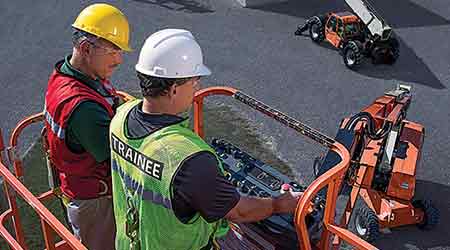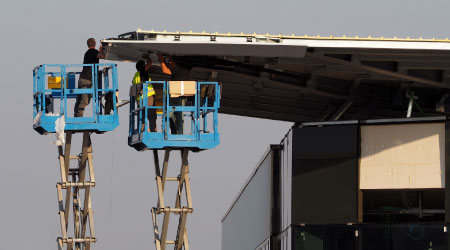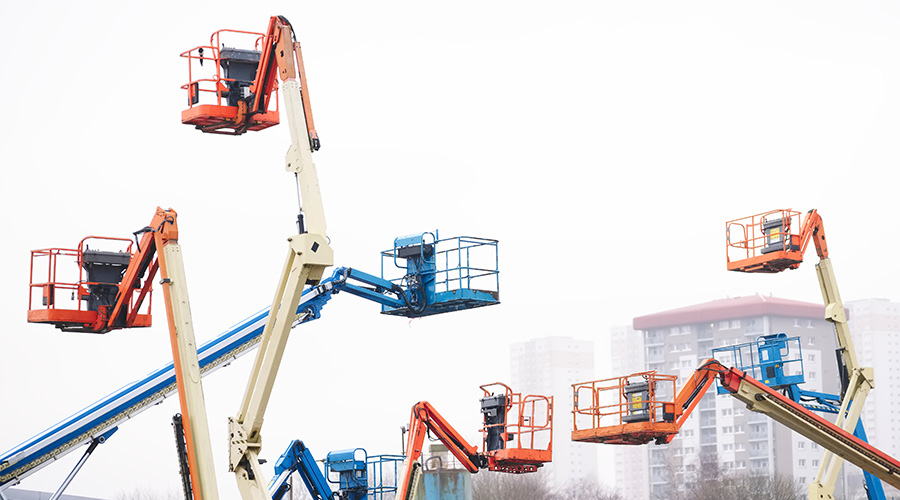 Technology advances make new-generation lifts potentially the safest ever built, but proper use requires that only trained, experienced, certified users operate the equipment to take full advantage of the safety features.
Technology advances make new-generation lifts potentially the safest ever built, but proper use requires that only trained, experienced, certified users operate the equipment to take full advantage of the safety features.Specifying Lifts According to Facility Needs
Smart decisions go beyond the type of lift. Understanding department needs and staffing issues are essential to making the proper decision.
Institutional and commercial facilities feature a host of hard-to reach areas that lead maintenance and engineering managers to consider using aerial work platforms. From gymnasium lighting systems to multi-story façades, buildings have a seemingly endless array of challenging out-of-the-way areas in which technicians have to work.
The process of specifying an aerial work platform — including scissor lifts, boom lifts, telehandlers, and personnel lifts — to access these areas involves more than just identifying the most appropriate product. By understanding facility needs, equipment features, and staffing issues, managers can specify a lift that meets the department’s short- and long-term needs.
Knowing needs
Understanding facility needs for aerial work platforms, or lifts, starts with understanding building codes and regulations. In some situations, handling and moving large fabrications at a work site might rule out using an aerial lift. In such situations, building codes instead might require the use of scaffolding.
Once managers decide to use a lift for one task, the next step is to better understand the entire range of work, locations, and conditions around a work site that might require a lift. Managers can divide these situations further into one-time use or recurring needs.
The third step is to examine the available lift choices that are designed to enhance safety and productivity on work sites in and around institutional and commercial facilities.
The fourth step is to consider the amount of equipment and personnel that needs to be at the elevated work site. This step is the basis for selecting the most appropriate capacity, elevated work area, size, and accessories.
Related Topics:















